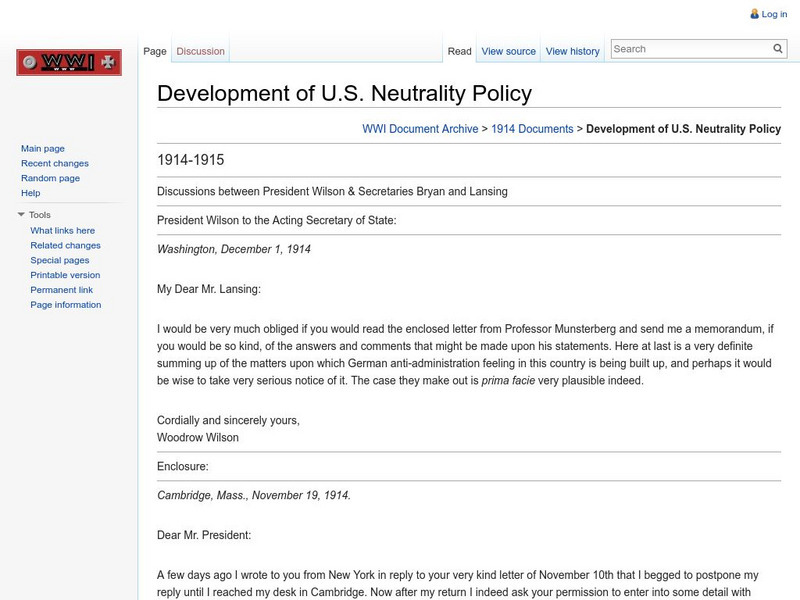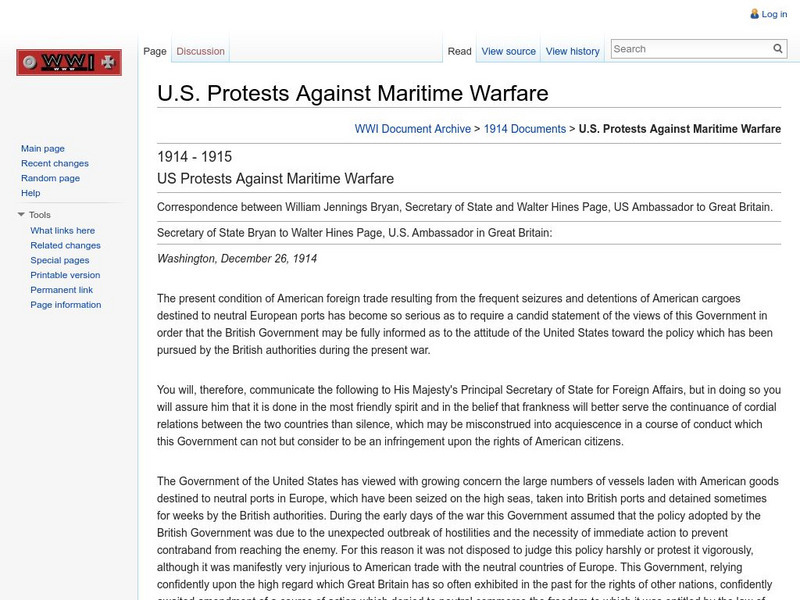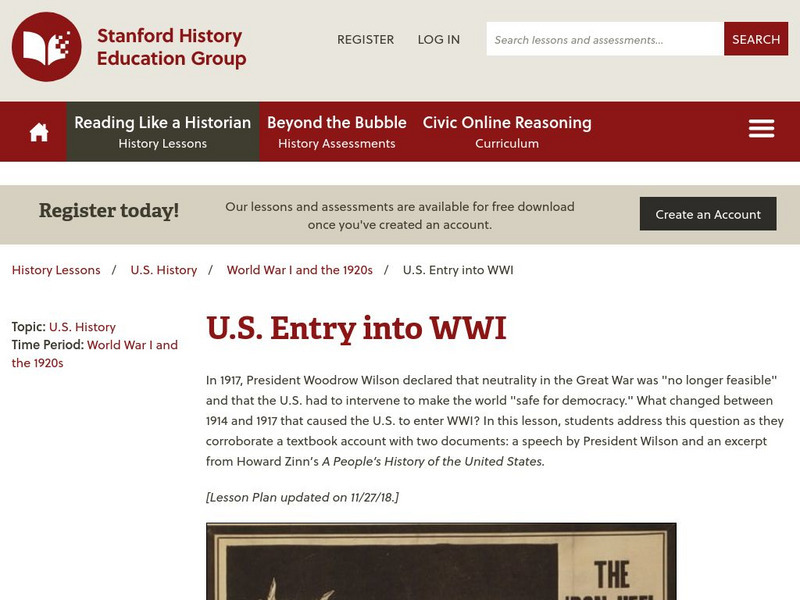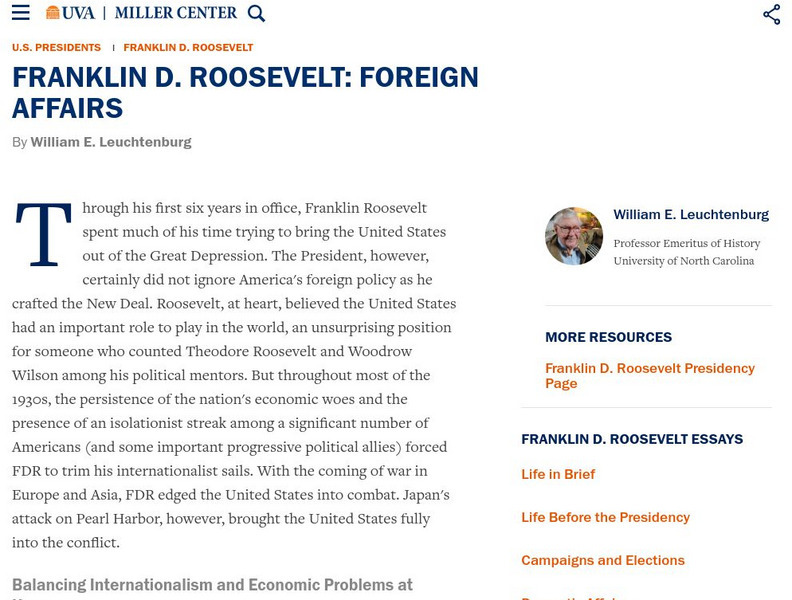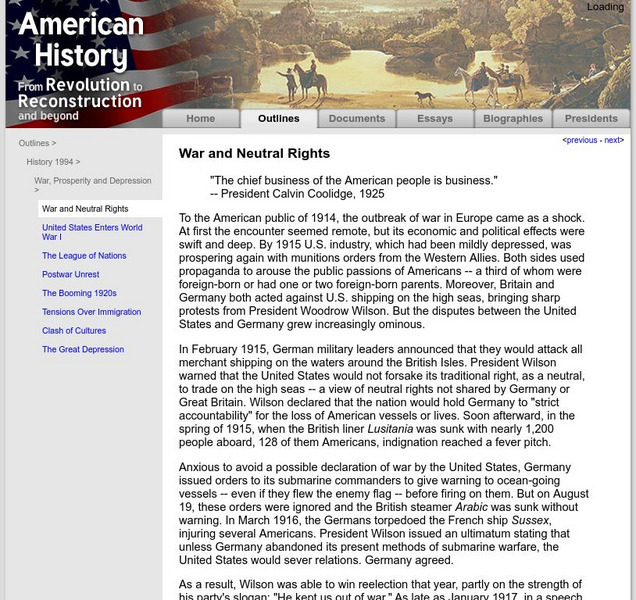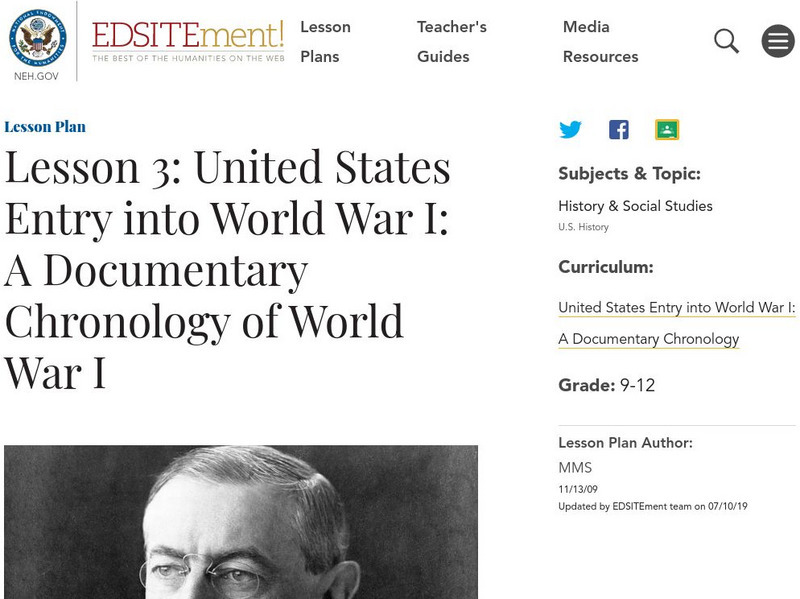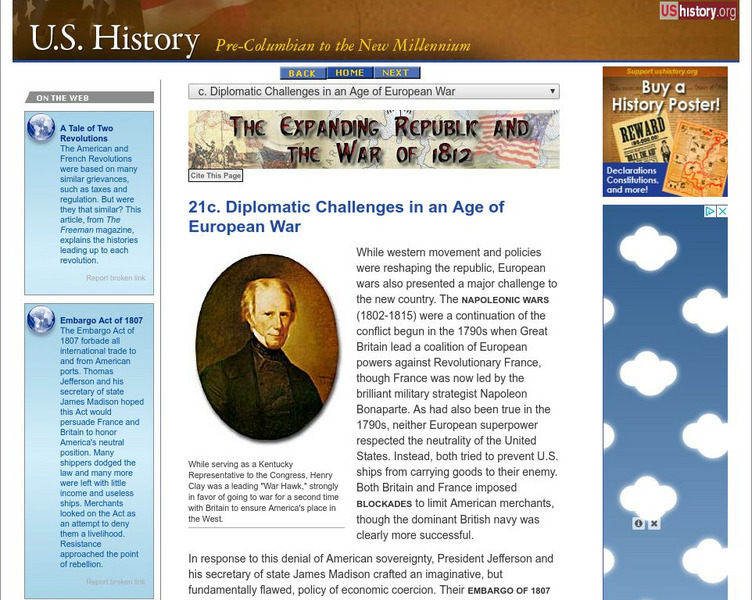Curated OER
Atomic Theory, Structure, and Symbols
In this atomic theory worksheet, students review the observations that led to the conclusion of the atom having a positively charged nucleus. Students compare atomic number and mass number and explain how the discovery of subatomic...
Curated OER
Identification of Career Choices
Take some time to have your pupils identify careers that are not traditional for their gender.
Brigham Young University
Brigham Young Univ.: Wwi Document Archive: Development of u.s. Neutrality Policy
Correspondence of two Secretaries of State in 1914 and 1915 outlining America's neutrality and the ways it is being demonstrated to countries in Europe.
Brigham Young University
Brigham Young U.: Wwi Document Archive: u.s. Protests Against Maritime Warfare
Series of letters from U.S. Secretary of State William Jennings Bryan protesting British interference with neutral U.S. merchant ships, and a lengthy response from the British government.
Stanford University
Sheg: Document Based History: Reading Like a Historian: u.s. Entry Into Wwi
[Free Registration/Login Required] In this historical inquiry lesson, students address the question, "What changed between 1914 and 1917 that caused the U.S. to enter WWI?" to corroborate a textbook account with two documents: a speech...
University of Groningen
American History: Outlines: War and Uneasy Neutrality
Overview of Roosevelt administration U.S. foreign policy and the challenge to remain neutral in an era of expansionist totalitarian regimes of Italy, Germany and Japan.
University of Groningen
American History: Documents: Proclamation of Neutrality 1793
The Proclamation of Neutrality was a formal announcement issued by President George Washington in May 1793, declaring the nation neutral in the conflict between France and Great Britain. It threatened legal proceedings against any...
Other
Early America: Explanation of Washington's Neutrality Proclamation
This article provides a good explanation of the reasons for Washington's neutrality proclamation. It also provides the text of the proclamation, and an original newspaper document.
University of Virginia
Miller Center at Uva: u.s. Presidents: Franklin Delano Roosevelt: Foreign Affairs
Scroll through this discussion of Franklin Roosevelt's attention to foreign policy during his several terms in office to "Confronting Germany and Japan" and "Descent into War." Here you will find out about the United States' position of...
Tom Richey
Tom Richey: American Neutrality (The u.s. And the European War)
A detailed PowerPoint reviewing the neutral position the United States held at the beginning of World War II.
Independence Hall Association
U.s. History: Reactions to a Troubled World
Read about the rising militarism and fascism in Europe and Asia as dictators expanded their territories. See how the United States reacted with its series of three neutrality acts.
University of Groningen
American History: Outlines: War and Neutral Rights
This resource presents a brief discussion of U.S. neutrality early in World War I and of the events which brought the country closer to war.
National Endowment for the Humanities
Neh: Edsit Ement: u.s. Entry Into World War 1: Curriculum Unit
A teacher-directed curriculum unit that deals with the issue of why the United States entered World war 1. Includes an extensive list of additional resources and activities.
University of Virginia
Miller Center at Uva: u.s. Presidents: Martin Van Buren
Get the facts about the life and administraton of Martin Van Buren (1782-1862), the 8th President of the United States (1837-1841).
University of Groningen
American History: Outlines: War and Neutral Rights
Overview of the outbreak of World War I in Europe and America's desire to remain neutral.
Independence Hall Association
U.s. History: Negotiating With the Superpowers
Read about the problems President George Washington had with foreign affairs. Both France and Great Britain ignored American sovereignty and claims of neutrality. Read about Great Britain's disregard of the Treaty of Paris which ended...
Oregon Secretary of State
Oregon at War: Before the War America's Strained Neutrality
Read about the attempts of the United States to remain neutral during World War I raging in Europe. Find out what finally made U.S. entrance into the war inevitable.
National Endowment for the Humanities
Neh: Edsit Ement: From Neutrality to War: The United States and Europe, 1921 1941
In this Curriculum Unit, students will consider "From Neutrality to War: The United States and Europe, 1921-1941" in 4 Lessons. The unit also includes worksheets and other student materials that can be found under the resource tab.
Digital History
Digital History: Neutrality and the Lusitania [Pdf]
American neutrality in World War I was sorely tested with the attack and sinking of the passenger ship, Luisitania. Read information about the attack and find conflicting reactions by Franklin Roosevelt and William Jennings Bryan about...
World War 1
Worldwar1.com: Great War Society: Relevance: America's Turn From Neutrality to Intervention
Essay discussing the events that influenced the U.S. to change its foreign policies during the years of 1914 to 1917. (Published Spring 1992, revised May 24, 1996)
This Nation
This Nation: Proclamation of Neutrality (1793)
Read the text of the Proclamation of Neutrality issued by George Washington in April, 1793, showing his effort to keep his new nation safe from unhealthy alliances.
Siteseen
Siteseen: American Historama: Neutrality Proclamation of 1793
Learn interesting facts about the Neutrality Proclamation of 1793 that prevented the risk of military engagement with either Britain or France.
ibiblio
Ibiblio: Words of War: The u.s. Congress Repeals of the 1939 Neutrality Act
Contains the text of a joint resolution to repeal sections of the 1939 Neutrality Act.
Independence Hall Association
U.s. History: Diplomatic Challenges in an Age of European War
Both the British and French challenged American sovereignty and neutrality on the high seas. Read about the solution favored by Thomas Jefferson, but despised by the American shippers. See why this a cause of the War of 1812, along with...


